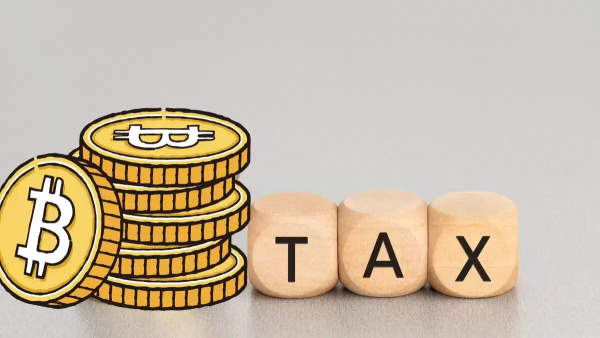
New Delhi, June 24, 2025 — If you’re investing in cryptocurrencies like Bitcoin, Ethereum, or other virtual digital assets (VDAs), it’s crucial to understand how much tax you owe to the Indian government. Despite global shifts in crypto regulation, India has retained its strict tax regime on crypto income in the Union Budget 2025. That means flat 30% tax, 1% TDS, and 4% cess are still applicable.
In this article, we explain in simple terms the current crypto tax laws in India, what forms you need to file, and why many Indian investors are now turning to foreign crypto exchanges.
📊 30% Flat Tax on Crypto Income Still in Effect
Under Section 115BBH of the Income Tax Act, any income earned from the transfer of crypto assets is taxed at a flat rate of 30%. This tax rate applies regardless of the holding period—whether you held the asset for one day or one year.
What makes this tax structure tougher is that:
-
No deductions are allowed (unlike equity investments).
-
You cannot offset losses against other income.
-
Gains are taxed as if they are speculative income, similar to gambling.
Additionally, a 4% health and education cess is applied to the total tax liability.
💸 1% TDS on Crypto Transactions Above ₹10,000
Another major burden for investors is Section 194S, which mandates 1% Tax Deducted at Source (TDS) on crypto transactions exceeding ₹10,000. This applies whether you are buying or selling, and the exchange usually deducts it on your behalf.
The aim of this provision is to track crypto activity in real-time, but it has led to liquidity issues on Indian platforms and discouraged frequent trading.
🧾 New Tax Filing Rules: Schedule VDA Is Now Mandatory
Starting FY 2025–26, the Indian government has introduced a new reporting requirement in the Income Tax Return (ITR) forms called Schedule VDA (Virtual Digital Asset).
This section requires you to declare:
-
Each crypto transaction
-
Dates of purchase and sale
-
Profit or loss details
If a taxpayer hides crypto income and it’s later discovered during audits or tax raids, the consequences are severe:
-
A 60% penalty tax under Section 158B
-
Additional cess and surcharge
-
Potential jail time up to 7 years for willful evasion
🌍 Shift to Foreign Crypto Exchanges on the Rise
As per a CoinTelegraph report, after the 1% TDS rule was introduced, millions of Indian crypto users migrated to international exchanges like Binance, KuCoin, and Coinbase to avoid the heavy compliance burden.
Key reasons include:
-
No TDS or tax on crypto profits in countries like Singapore and Dubai
-
More flexibility in trading and withdrawals
-
Lack of capital gains incentives in India compared to international norms
Experts say this shift has not only led to loss of tax revenue for the Indian government but also weakened the domestic crypto ecosystem.
🔍 India’s Approach vs Global Trends
While many countries are working to integrate crypto into their mainstream financial systems, India’s stance remains cautious. Unlike the United States, which taxes crypto as property, or Germany, which offers tax exemptions for long-term holdings, India categorizes crypto earnings akin to gambling income—with no benefits for long-term investment or losses.
✅ Final Takeaway: What Should Indian Crypto Investors Do?
-
Declare all crypto gains clearly in the new Schedule VDA while filing ITR
-
Maintain a record of every transaction, including dates, amounts, and platform used
-
Be aware of the 30% tax, 1% TDS, and 4% cess
-
If using international exchanges, understand you’re still liable for tax in India if you are a resident
-
Consider consulting a tax advisor to stay compliant and avoid penalties
-
Laughter Chefs 2: Sara Ali Khan leaves audience in splits with her hilarious imitation of Ankita Lokhande's laugh

-
Dipika Kakar shares how she couldn't welcome sister-in-law Saba's son Haider properly post his birth; says 'There was so much of stress back then'

-
Lisa Snowdon praises 'wrinkle-fighting' serum that gives immediate glow and hydration

-
Justin and Hailey Bieber's marriage faces new struggles

-
Aayush Sharma is on the road to recovery after two surgeries for back pain
